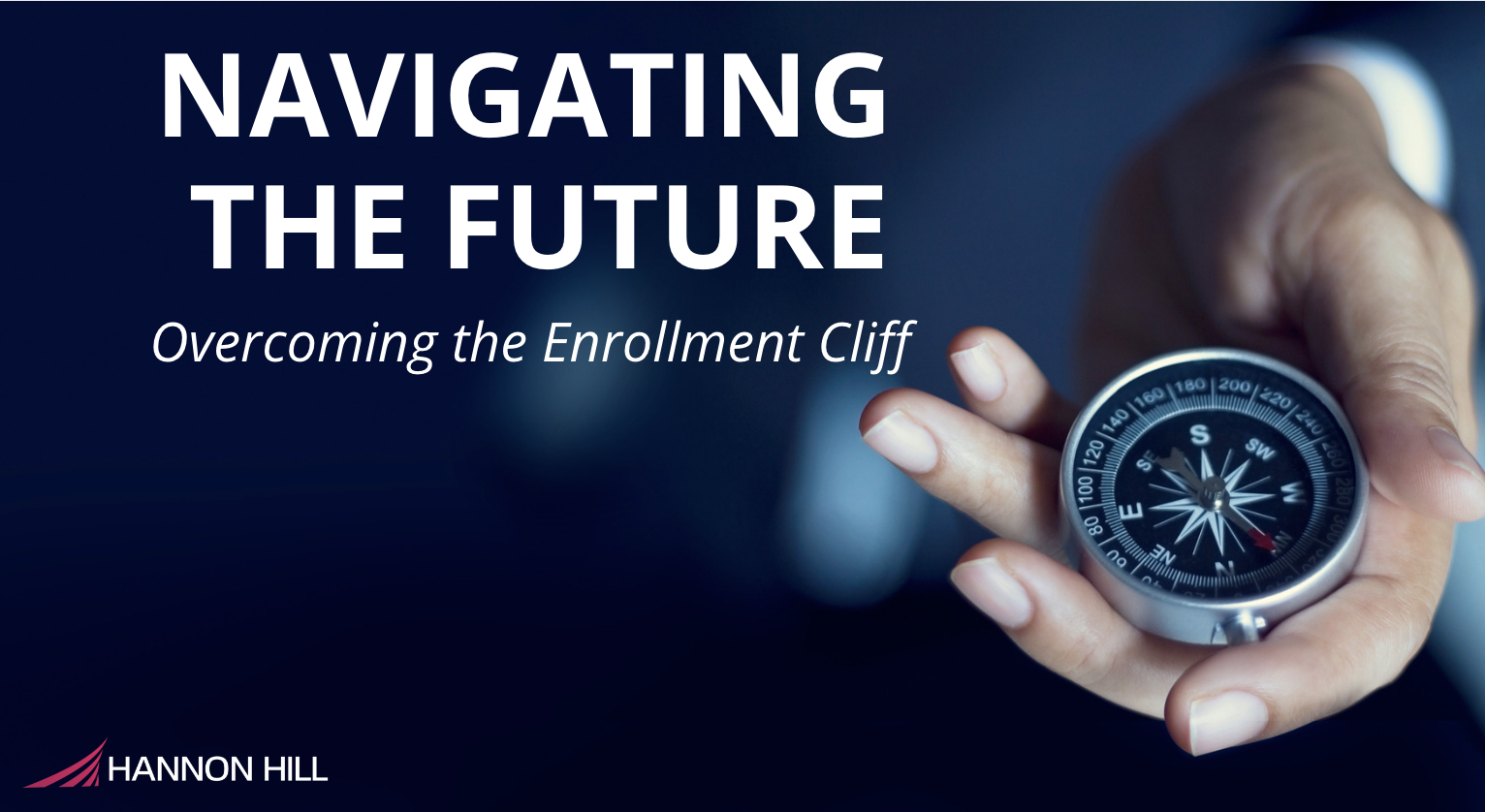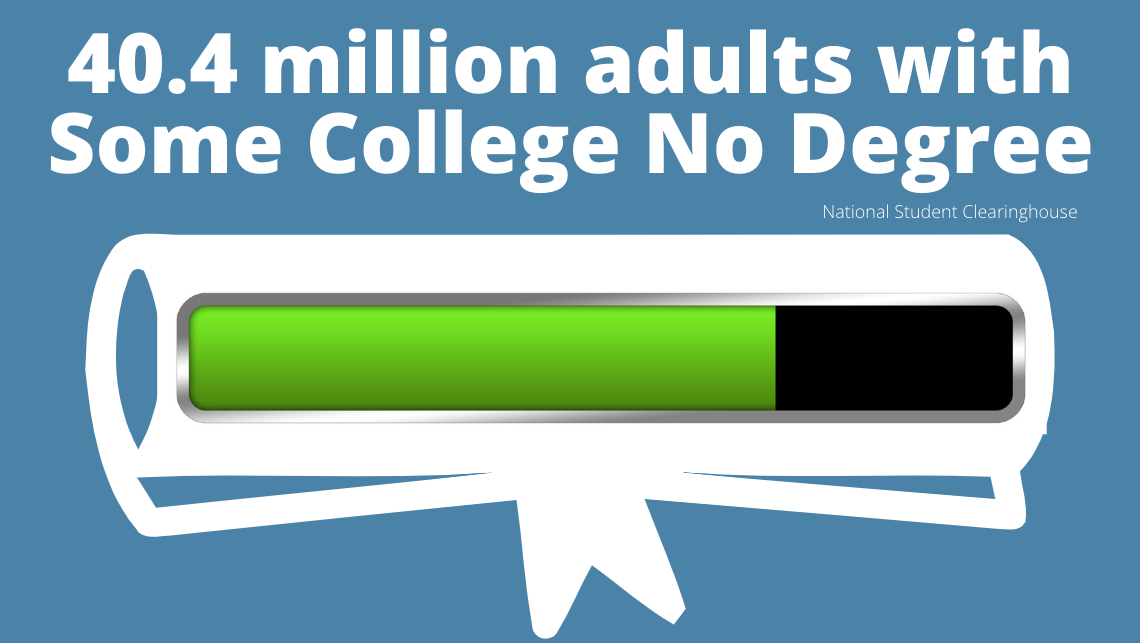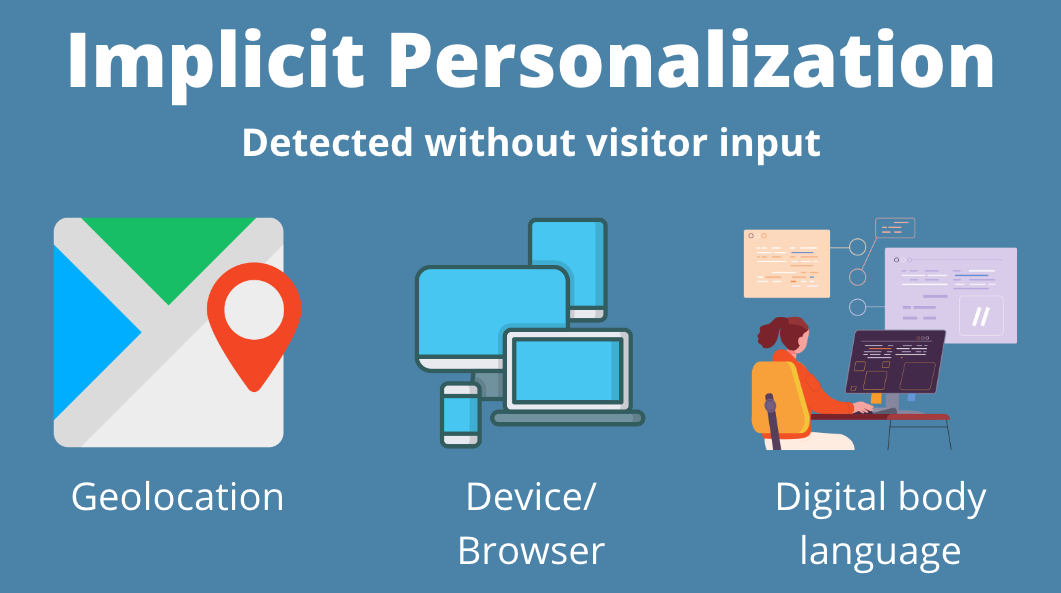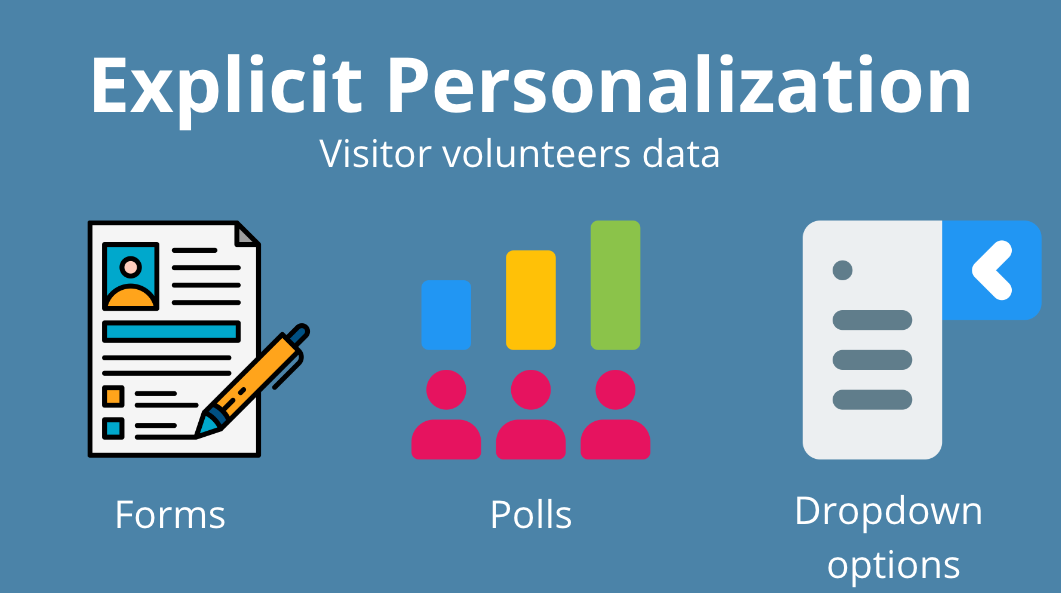
On October 25, Hannon Hill hosted its webinar titled, "Navigating the Demographic Enrollment Cliff -- Exploring a Shift in Higher-Ed Marketing."
Moderated by Hannon Hill's CEO, Kat Liendgens, the event featured insights from speakers Carrie Phillips, Chief Marketing Officer of the University of Arkansas at Little Rock, and Hannon Hill's Marketing Specialist, Chris Rapozo.
The presentation explored the nuances of marketing to non-traditional students and the challenges that higher-ed marketers face in the coming evolving landscape.
Below is a recap of the conversation:
Dr. Phillips started the conversation by giving an overview of the Enrollment Cliff introduced by the Western Interstate Commission on Higher Education, signaling a predicted drop of 350-400,000 college-aged students between 2025 and 2037.
This decrease traces back to the 2007-2008 economic downturn when many individuals decided to delay or forgo starting families, leading to fewer college-bound youths nearly two decades later.
"The fiscal ramifications for the higher education sector are colossal, with a potential impact of $4.2 billion," said Phillips.
More than just numbers, this shift will see a decline of 350,000 traditional white college students and 50,000 black students.
On the upside, there will be an increase of 50,000 Asian students and 100,000 Hispanic students.
These demographic changes bring forth unique challenges.
Institutions may need to increase investments in recruitment and support, especially for first-generation students who, without added support, are 33% less likely to graduate.
Geographically, while some regions might experience growth, the risk lies in complacency. Institutions might venture into these growing areas, intensifying the competitive landscape.
Disturbingly, up to 14% of institutions with endowments of $100 million or less could face closure, and a substantial number might teeter on the brink of bankruptcy.
Dr. Phillips underscored the importance of recognizing and capitalizing on traditionally overlooked demographics in higher education.
Emphasizing the potential of non-traditional students, military learners, and individuals looking to re-skill, Phillips drew attention to an astonishing statistic:

40.4 million adults have attended college but haven't completed a degree.
This figure suggests a substantial opportunity for institutions.
However, capturing this audience can be more complex. It demands that institutions offer comprehensive online programs and nurture strong alumni networks that can drive engagement and enhance classroom experiences.
Fostering innovation and flexibility, especially in adapting to the needs of adult learners, is paramount. As colleges and universities contemplate these shifts, Phillips advocates for the pivotal role of marketing teams, positioning them as essential change agents in this evolving landscape.
A non-traditional student graduate, Rapozo emphasizes the importance of clarity, purpose, and personal growth when asked about his unique educational trajectory as a non-traditional student.
These factors are common motivators among adult learners who seek to re-enroll in education. Many, like Rapozo, are propelled by lived experiences that have refined their aspirations.
The limitations in career advancement without a formal degree often push adults to embrace higher education to upskill, support a future family, and break past ceilings.
As an immigrant and first-generation student, Rapozo's journey also represented a tribute to his roots and a commitment to realize his full potential through education.

In the face of the enrollment cliff, institutions must focus on attracting new students and retaining current ones.
It's no longer feasible to rely solely on recruitment; retention is equally crucial.
Phillips emphasizes that a positive student experience is essential. If institutions don't serve their students adequately, competitors will.
Key strategies include:
Institutions should prioritize understanding and meeting student needs, thus ensuring both recruitment and retention amidst challenges.
When marketing to non-traditional students, Dr. Phillips urged institutions to follow some of the following strategies:
Rapozo emphasized the significance of website personalization in enhancing user experience and briefly explained how Hannon Hill's web personalization tool, Clive, can assist with it.
Two ways methods a personalization tool collects visitor data:


For instance, a university website might display generic content initially.
Upon form submission by a prospective student, it shifts to tailored content, creating a personalized and relevant journey.
Each subsequent visit showcases data recognition, increasing user engagement and driving conversion.
Rapozo suggests a deeper exploration of Clive for more insights.

Phillips emphasizes the importance of community engagement in higher education, illustrating this with the example of the University of Arkansas at Little Rock's strategic plan.
Through partnerships with construction firms, students gain hands-on experience with industry-standard equipment, ensuring their readiness for employment.
These collaborations led to lab investments and reinforced the institution's commitment to student success.
The webinar offered valuable insights into the shifting dynamics of higher education marketing and provided a deep understanding of marketing to non-traditional students and the associated challenges.
We encourage you to watch the webinar on-demand to gain comprehensive knowledge and guidance in navigating these complexities.
It's a must-see for higher-ed professionals seeking to adapt and thrive in the ever-changing landscape of student demographics.
Don't miss out on this enlightening discussion—access the webinar now and equip yourself with the tools for success in higher education marketing.
Last Updated: Oct 26, 2023 11:00 AM